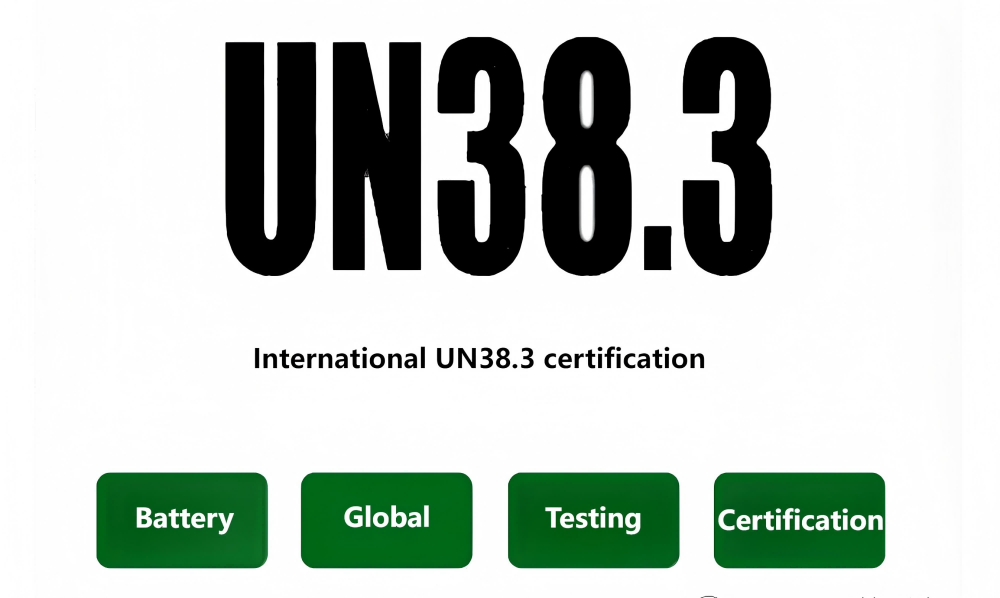In-depth analysis of how UN38.3 certification ensures the safety of lithium-ion battery transportation and reveals the core of rechargeable battery export compliance.
In the global energy transformation, lithium-ion batteries have become the core power source for electric vehicles and energy storage systems. However, this type of high-energy-density rechargeable battery faces risks such as extreme temperature, vibration and shock during transportation, which may cause leakage or explosion if not handled with care. For this reason, the UN38.3 certification (Part 3, Section 38.3 of the "Dangerous Goods Transport Test and Standards") formulated by the United Nations has become the "safety passport" for the international circulation of lithium-ion batteries, especially for the popular lithium iron phosphate battery, which is the life and death line for market access.
1.8 Big Test: The Ultimate Challenge of Lithium-ion Batteries
(1) Altitude simulation test
Simulating the low-pressure environment of 10,000 meters (11.6kPa), the lithium-ion battery must withstand 6 hours of storage without leakage or explosion.
(2) High and low temperature cycle test
Cyclic shock 10 times between -40℃ and 75℃ to verify the thermal stability of the lithium iron phosphate battery.
(3) Vibration test
Three-dimensional sinusoidal sweep vibration (7-200Hz) lasts for 3 hours/axial direction to ensure zero faults in the lithium-ion battery structure.
(4) Impact test
150gn half-sine shock (pulse 6ms) tests the battery's short-circuit resistance. The rechargeable battery needs to withstand the test of life and death in milliseconds.
(5) 55℃ external short-circuit test
Forced short circuit at high temperature until the battery cools down, the shell temperature must be ≤170℃ and no fire - this is the core indicator of lithium ion battery manufacturer quality control.
(6) Impact test
13kN pressure directly causes the battery cell to deform by 50%. Large lithium-ion batteries must pass this explosion-proof test.
(7) Overcharge test
Continuously charge at double the rated voltage for 24 hours to eliminate the risk of thermal runaway of lithium iron phosphate batteries.
(8) Forced discharge test
Discharge to 0V and then reverse charge to verify the safety of lithium-ion batteries under abnormal working conditions.
Simulating the low-pressure environment of 10,000 meters (11.6kPa), the lithium-ion battery must withstand 6 hours of storage without leakage or explosion.
(2) High and low temperature cycle test
Cyclic shock 10 times between -40℃ and 75℃ to verify the thermal stability of the lithium iron phosphate battery.
(3) Vibration test
Three-dimensional sinusoidal sweep vibration (7-200Hz) lasts for 3 hours/axial direction to ensure zero faults in the lithium-ion battery structure.
(4) Impact test
150gn half-sine shock (pulse 6ms) tests the battery's short-circuit resistance. The rechargeable battery needs to withstand the test of life and death in milliseconds.
(5) 55℃ external short-circuit test
Forced short circuit at high temperature until the battery cools down, the shell temperature must be ≤170℃ and no fire - this is the core indicator of lithium ion battery manufacturer quality control.
(6) Impact test
13kN pressure directly causes the battery cell to deform by 50%. Large lithium-ion batteries must pass this explosion-proof test.
(7) Overcharge test
Continuously charge at double the rated voltage for 24 hours to eliminate the risk of thermal runaway of lithium iron phosphate batteries.
(8) Forced discharge test
Discharge to 0V and then reverse charge to verify the safety of lithium-ion batteries under abnormal working conditions.
2. Certification process: a life-and-death race for lithium ion battery manufacturers
(1) Qualification selection: Look for CNAS/ILAC-MRA accredited laboratories (such as Xunke Testing and Huake Testing);
(2) Sample attack: Provide battery cell + battery pack samples (typical demand: 20 battery cells + 10 finished products);
(3) Document battlefield: MSDS safety data sheet, battery specification sheet, and anti-short circuit packaging diagram are indispensable;
(4) Time window: Expedited processing takes 10-15 days, and design changes require retesting.
(2) Sample attack: Provide battery cell + battery pack samples (typical demand: 20 battery cells + 10 finished products);
(3) Document battlefield: MSDS safety data sheet, battery specification sheet, and anti-short circuit packaging diagram are indispensable;
(4) Time window: Expedited processing takes 10-15 days, and design changes require retesting.
3. Why is UN38.3 the “sea ticket” for lithium-ion batteries?
(1) Compliance requirements: IATA stipulates that uncertified lithium-ion batteries are prohibited from being carried on airplanes, and DHL/FedEx directly refuses to accept them;
(2) Cost advantage: Certified lithium iron phosphate batteries can reduce the transportation cost of the entire vehicle by 30%;
(3) Trust endorsement: Authoritative reports help companies break down trade barriers. For example, the North American market requires lithium ion battery manufacturers to provide UN38.3+UL dual certification.
From mobile phone energy storage to electric vehicles, lithium-ion batteries are reshaping the energy world. However, only by crossing the eight "life and death checkpoints" of UN38.3 can each rechargeable battery safely reach every corner of the world. Choosing a compliant lithium ion battery manufacturer and strictly controlling the lithium iron phosphate battery testing process are the real keys to the international market!
(2) Cost advantage: Certified lithium iron phosphate batteries can reduce the transportation cost of the entire vehicle by 30%;
(3) Trust endorsement: Authoritative reports help companies break down trade barriers. For example, the North American market requires lithium ion battery manufacturers to provide UN38.3+UL dual certification.
From mobile phone energy storage to electric vehicles, lithium-ion batteries are reshaping the energy world. However, only by crossing the eight "life and death checkpoints" of UN38.3 can each rechargeable battery safely reach every corner of the world. Choosing a compliant lithium ion battery manufacturer and strictly controlling the lithium iron phosphate battery testing process are the real keys to the international market!
 +86 13332949210
+86 13332949210 info@xihobattery.com
info@xihobattery.com







 Xiho
Xiho Jul 02 2025
Jul 02 2025











